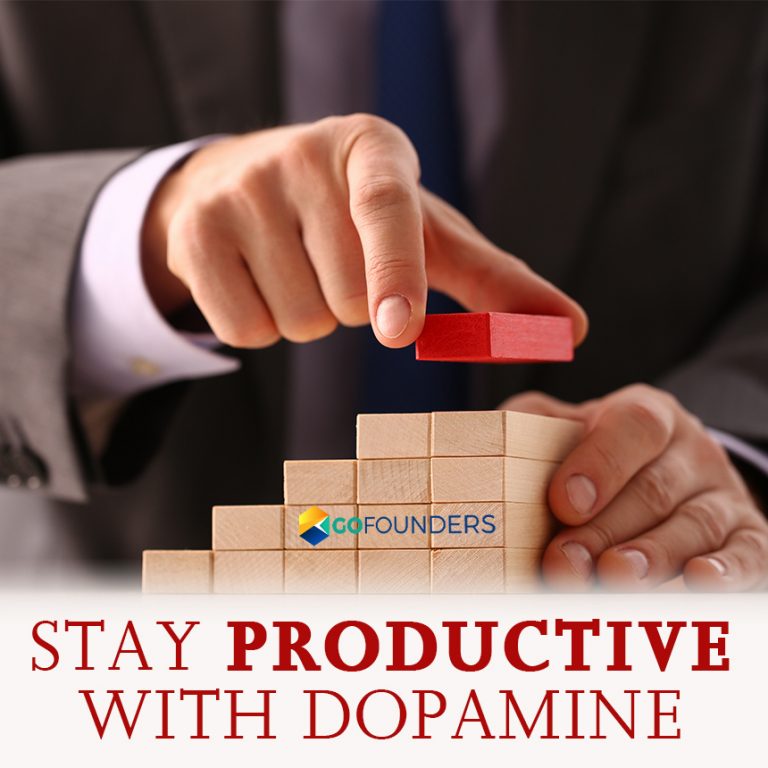
Consider it’s almost the end of your working day, and your motivation is severely lacking. Working your way through the long-to-do list next for you to complete at this point, even the thought of responding to a single email feels similar to running a marathon.
So, in this case, what do you do? If you’re like most of the people, you might give in to your unfocused state and peruse social media or YouTube. Or, you might just lay down your head on your desk and plead to the productivity gods for a much-required push.
Get your head up from your desk, because there’s a better way to improve your brain’s motivation. It all comes back to something called Dopamine.
So what is Dopamine?
Dopamine is much more than just a feel-good neurotransmitter. It’s more closely associated with motivation. It’s a brain chemical that doesn’t respond to rewards—it also urges us to seek them.
Without indulging in a complicated neuroscience lesson, it directly works like this: Your brain determines which activities lead to pleasurable sensations and discharges Dopamine to encourage you to act and acquire that reward once again. At this point, you’ll most likely undergo another spike in Dopamine.
Hence, assuming that Dopamine causes pleasure is an overly simplified view. Dopamine indeed does most of its work much before you sense that satisfaction. It’s the brain’s motivation neurotransmitter.
That can certainly have significant implications on your productivity. If you can take control of your dopamine levels, you can trick your brain into exploring a pleasurable experience (such as removing something from your to-do list) and support neuroscience to get more pleasurable things done.
How to Enhance Your Motivation and Productivity
But how do you do that? Do you have any authority over your dopamine levels? Or is it just behind-the-scenes brain magic?
But, let’s be clear about something first, you have much more power than you ever imagined. Study proves that there are certain things you can do to increase dopamine levels.
Here’s how to get your Dopamine flowing:
- Record small accomplishments. A to-do list strengthens how you’re accomplishing your goals. As you feel, you are making more progress and you’ll sense the more significant effects of Dopamine.
- Share results with your team. Conversing about your achievements (irrespective of whether they’re positive or negative) indicates that others will appreciate your work, resulting in more positive feedback. Recognizing and praising the work of your co-workers can also boost your Dopamine.
- Stay on task with micro-deadlines. Staying completely concentrated on one task at a time will urge you to sit down and get the work done. The more often you do that, the more positive feedback you’ll see (through getting your job done), this will increase your Dopamine.
- Concentrate on how great you’ll feel when your project is complete. A study found that result-driven focus urged people to complete their work.
- Test out the latest productivity tools to make complex tasks much more doable. Whether it’s missed communications with teammates, juggling time zones, an overflowing inbox, or trying to connect with your customers better, these tools can help you mark things off your list quicker, leading to a higher flow of Dopamine.
Physical tricks to kick your Dopamine into a high gear
Dopamine has a biological association with our motivation to succeed. You can boost your Dopamine through positive feedback (that happens by pursuing incremental growth). You can also improve your ability to perform tasks by developing healthy habits.
- Take a 10-minute nap. The study shows that 10 minutes is the optimal time. After that, “sleep inertia” can lock-in, making you unproductive and inactive.
- Boost your diet with dopamine-filled foods. For a little extra kick, ensure you’re eating food with lots of natural probiotics, such as sauerkraut and yogurt, and natural glucose, which found in raw nuts and fruits.
- Make a left brain/right brain switch. Evidence shows that flexing both muscles — analytical and creative— can make you a well-rounded worker. Take time to move through both an art project and Excel or more straightforward quantitative tasks or a creative brainstorming session to strengthen both sides of your brain and feel productive on several fronts.
- Get moving at midday. Just a 20-minute walk can produce positive results. And if you choose for a brief, high-intensity workout, it can drive your dopamine levels to new heights.
Boost your health, and you’ll improve your ability to achieve — and obtain rewards.
Final Thoughts
Though effort remains a part of the equation, sometimes the remedy for low motivation might be traditional perseverance and determination— focused on completing tasks even when we don’t want to.
You may hack your Dopamine, but without additional efforts, it can only take you a little distance. But motivation isn’t just about increasing Dopamine — it requires digging deep and being persistent.


